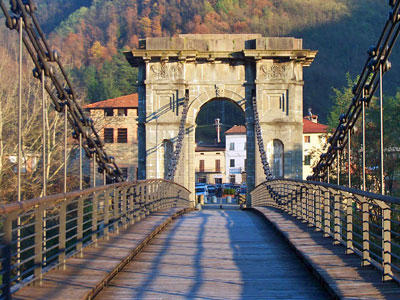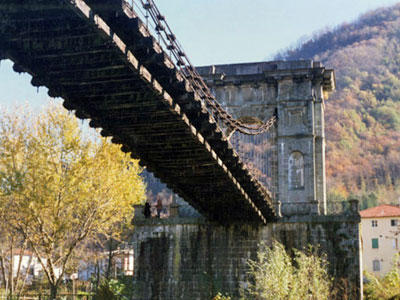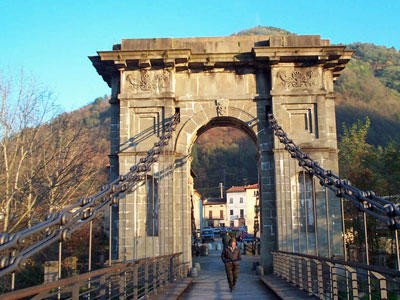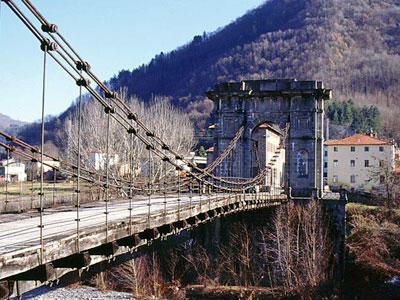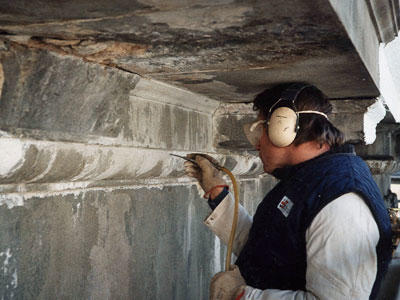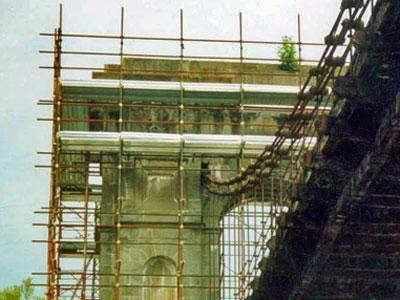Il Ponte della Catene, or the Chains Bridge, spans the Lima River in Tuscany, connecting the towns of Fomoli and Chifenti. In the nineteenth century, royal architect Lorenzo Nottolini (1787-1851) designed this footbridge at the behest of Duke Carlo Ludovico, who sought to provide an appropriate avenue of approach to Bagni di Lucca’s treasured thermal baths. Nottolini, who had traveled to England and Germany to study new construction techniques, created a suspension bridge with a wooden platform and two carved sandstone arches strung through with iron chains. Because Nottolini died and the Duchy of Lucca changed hands during construction, another local architect, Bettino Ricasoli, completed the project in the employment of the Duke of Tuscany. During World War II, bombs damaged the metal links and wood base of the Chains Bridge, necessitating repairs that were carried out in 1953. Despite these corrective efforts, the bridge was nearing collapse at the end of the twentieth century because of material deterioration and vibrations from nearby construction.
2000 and 2002 World Monuments Watch
Several attempts at restoration were made during the decades following the 1953 repairs of the Chains Bridge, but none of them fully addressed the problems of the structure. At the end of the twentieth century, the bridge was in danger of collapse due to the aging of materials and the negative impact of modern construction in the area. In addition, freezing and thawing cycles were occurring in the sandstone facing and were causing cracks in the arches. The bridge was included on the World Monuments Watch in 2000 and 2002 in order to raise awareness and support for a restoration project. The governments of the Province of Lucca and the Communes of Bagni di Lucca and Borgo a Mozzano developed a master plan for conservation that prioritized emergency stabilization. The first phase of work involved the replacement of the wooden slabs, the restoration and strengthening of the iron elements, and the introduction of a subtle, waterproof capping to combat the effects of harsh weather. WMF provided funds to restore one of the two stone arches, including the conservation of bas-reliefs, cornices, and other decorative elements.
When Duke Carlo Ludovico commissioned the construction of the Chains Bridge, he created an unusual specimen of nineteenth-century architectural engineering that combines wood, stone, and iron to create a curious and captivating visual effect. The bridge was one of the last achievements of architect Lorenzo Nottolini, who designed more than ten structures in Lucca during his three-decade career. The Chains Bridge, alongside the Piazza dell’Anfiteatro and the Observatory of Lucca, represent some of his finest work and continue to testify to this innovative period in architectural history.

